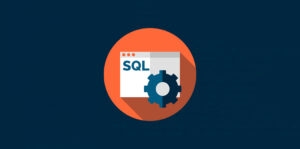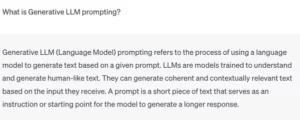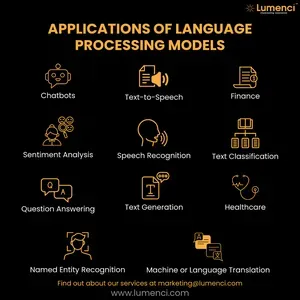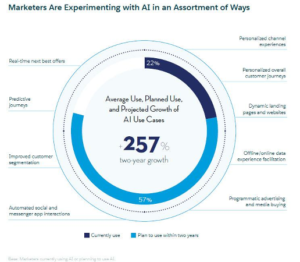Are you a data enthusiast looking to break into the world of analytics? The field of data science and analytics is booming, with exciting career opportunities for those with the right skills and expertise. But with so many job titles and buzzwords floating around, figuring out which path to pursue can be challenging. So, let’s settle the age-old debate: Data Scientist vs Data Analyst – which is the better career option to pursue in 2023? This article will explore the differences between the data science and data analytics, the skills required for each role, and the job prospects in 2023.
Table of contents
What is a Data Scientist?
A Data Scientist is a professional who uses statistical and computational methods to extract insights and knowledge from data. They analyze, visualize, and model data to help businesses make informed decisions. They have a strong math, statistics, and programming background and are skilled in machine learning and data visualization.
[embedded content]
What is a Data Analyst?
A Data Analyst is a professional who uses data to answer questions and solve problems for businesses. They collect, clean, and organize data and then analyze it to identify patterns and trends. They use data visualization tools to present findings and provide insights to help businesses make data-driven decisions.
[embedded content]
Data Scientist vs Data Analyst
| Category | Data Scientist | Data Analyst |
|---|---|---|
| Main Role | Use statistical and computational methods to extract insights from data and build predictive models. | Analyze data and provide insights to help businesses make data-driven decisions. |
| Skills | Strong background in math, statistics, and programming. Skilled in machine learning, data visualization, and big data tools. | Proficient in data collection, data cleaning, data analysis, and data visualization. Skilled in Excel, SQL, and Tableau. |
| Job Responsibilities | Collect and analyze large and complex data sets. Develop algorithms and predictive models. Create and interpret data visualizations. | Collect, clean, and organize data. Analyze data using statistical methods. Create data visualizations and dashboards. |
| Industry Focus | Typically found in industries such as tech, finance, healthcare, and marketing. | Found in a wide range of industries, including finance, marketing, healthcare, and retail. |
| Education | Typically requires a Master’s or PhD in a quantitative field such as statistics, mathematics, or computer science. | Usually requires a Bachelor’s or Master’s degree in a quantitative field such as mathematics, statistics, or computer science. |
| Salary Range (US) | $78,000 – $171,000 per year | $50,000 – $97,000 per year |
Let’s explore the difference between data scientist and data analyst based on different components.
Education Qualifications
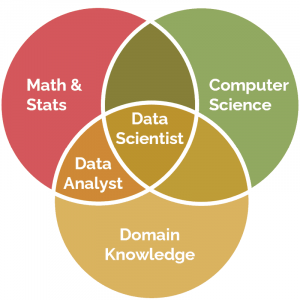
Data Scientist
- Typically requires a Master’s or PhD in a quantitative field such as statistics, mathematics, computer science, or engineering.
- Strong background in math and statistics, with knowledge of machine learning, data mining, and big data technologies.
- Proficiency in programming languages such as Python, R, and SQL and data visualization tools such as Tableau and PowerBI.
Data Analyst
- Usually requires a Bachelor’s or Master’s degree in a quantitative field such as mathematics, statistics, computer science, or economics.
- Strong analytical skills, with knowledge of statistical methods and data visualization techniques.
- Proficiency in data manipulation tools such as Excel, SQL, and SAS and data visualization tools such as Tableau and PowerBI.
What are the Responsibilities of a Data Analyst and Data Scientist?
Data Scientist
- Collecting and analyzing large and complex data sets to extract insights and build predictive models.
- Developing and implementing algorithms and statistical models to solve business problems.
- Designing experiments and testing hypotheses to identify cause-and-effect relationships.
- Creating and interpreting data visualizations to communicate insights to stakeholders.
- Staying up-to-date with the latest industry trends and technologies in machine learning, big data, and data science.
Data Analyst
- Collecting, cleaning, and organizing data from various sources.
- Analyzing data using statistical methods and data visualization techniques to identify trends and patterns.
- Creating reports and dashboards to communicate insights and recommendations to stakeholders.
- Collaborating with cross-functional teams to identify and solve business problems using data.
- Staying up-to-date with the latest industry trends and technologies in data analysis and visualization.
Data Scientist
- Strong programming skills in languages such as Python, R, and SQL
- Familiarity with big data tools such as Hadoop, Spark, and Hive
- Knowledge of machine learning algorithms and frameworks, such as scikit-learn, TensorFlow, and Keras
- Proficiency in data visualization tools such as Tableau, PowerBI, and matplotlib
- Experience with cloud platforms such as AWS, Azure, and Google Cloud Platform
- Ability to work with unstructured and semi-structured data, such as text, image, and video data
Data Analyst
- Proficiency in data manipulation tools such as Excel, SQL, and SAS
- Knowledge of statistical methods and data visualization techniques
- Familiarity with data visualization tools such as Tableau, PowerBI, and ggplot2
- Experience with data cleaning, transformation, and quality assurance
- Ability to work with structured data, such as relational databases and spreadsheets
Salary and Career Growth Potential
Data Scientist
- The median salary for a Data Scientist in the United States is around $118,000 per year according to Glassdoor.
- Data Scientists have a high career growth potential, with opportunities to move into management roles or specialize in specific areas such as artificial intelligence or data engineering.
Data Analyst
- The median salary for a Data Analyst in the United States is around $68,000 per year according to Glassdoor.
- Data Analysts have a moderate career growth potential, with opportunities to move into management roles or specialize in specific areas such as business intelligence or data visualization.
Data Scientist vs Data Analyst – Final Verdict
Which career path is right for you: data scientist or data analyst? While both roles share some similarities, there are significant differences in skills, responsibilities, and career growth opportunities. As we have seen, becoming a data scientist requires a strong foundation in math, statistics, and programming and expertise in machine learning, big data, and cloud computing. On the other hand, becoming a data analyst requires proficiency in data analysis tools and techniques, data visualization, and data storytelling.
Ultimately, the choice between data scientist and data analyst comes from your interests, skills, and career goals. Both roles offer exciting opportunities to work with data and make meaningful contributions to businesses and society.
If you’re interested in pursuing a career in data science or data analytics, we encourage you to check out our Full Stack Data Scientist course. This comprehensive training program covers everything from data collection and preprocessing to machine learning and deep learning, as well as real-world projects and case studies. Start your journey today!
Related
- SEO Powered Content & PR Distribution. Get Amplified Today.
- Platoblockchain. Web3 Metaverse Intelligence. Knowledge Amplified. Access Here.
- Minting the Future w Adryenn Ashley. Access Here.
- Source: https://www.analyticsvidhya.com/blog/2023/04/data-scientist-vs-data-analyst/
- :is
- 000
- 10
- 11
- 2023
- 28
- 8
- a
- According
- age-old
- algorithms
- analysis
- analyst
- Analysts
- Analytical
- analytics
- Analytics Vidhya
- analyze
- analyzing
- and
- answer
- ARE
- areas
- around
- article
- artificial
- artificial intelligence
- AS
- AWS
- Azure
- background
- based
- BE
- becoming
- Better
- between
- Big
- Big Data
- big data tools
- Break
- build
- business
- business intelligence
- businesses
- CAN
- Career
- case
- Case Studies
- challenging
- check
- choice
- Cleaning
- Cloud
- collect
- collection
- communicate
- complex
- components
- comprehensive
- computer
- computer science
- computing
- content
- contributions
- covers
- create
- cross-functional teams
- data
- data analysis
- data analyst
- Data Analytics
- data mining
- data science
- data scientist
- data sets
- data visualization
- data-driven
- databases
- debate
- decisions
- deep
- deep learning
- Degree
- develop
- difference
- differences
- different
- each
- Economics
- embedded
- encourage
- Engineering
- enthusiast
- everything
- Excel
- exciting
- expertise
- explore
- extract
- field
- final
- finance
- floating
- For
- found
- Foundation
- frameworks
- from
- Glassdoor
- Goals
- Google Cloud
- Growth
- growth potential
- Hadoop
- hand
- Have
- healthcare
- help
- High
- HTTPS
- identify
- image
- implementing
- in
- Including
- industries
- industry
- informed
- insights
- Intelligence
- interested
- interests
- IT
- Job
- job titles
- journey
- knowledge
- Languages
- large
- latest
- learning
- like
- looking
- machine
- machine learning
- make
- management
- Manipulation
- many
- Marketing
- master’s
- math
- mathematics
- max-width
- meaningful
- methods
- Mining
- model
- models
- move
- of
- offer
- on
- opportunities
- Option
- organizing
- Other
- path
- patterns
- Platforms
- plato
- Plato Data Intelligence
- PlatoData
- potential
- present
- problems
- process
- professional
- Program
- Programming
- programming languages
- projects
- prospects
- provide
- pursue
- Python
- quality
- quantitative
- Questions
- range
- real world
- recommendations
- Relationships
- Reports
- required
- requires
- responsibilities
- retail
- Role
- roles
- salary
- SAS
- Science
- Scientist
- scientists
- scikit-learn
- Sets
- settle
- Share
- significant
- similarities
- skilled
- skills
- So
- Society
- SOLVE
- some
- Sources
- Spark
- specialize
- specific
- SQL
- stack
- stakeholders
- start
- States
- statistical
- statistics
- strong
- structured
- studies
- such
- Tableau
- teams
- tech
- techniques
- Technologies
- tensorflow
- Testing
- The
- the world
- titles
- to
- tools
- Training
- Transformation
- Trends
- United
- United States
- up-to-date
- us
- use
- various
- Verdict
- Video
- visualization
- vs
- WELL
- which
- while
- WHO
- wide
- Wide range
- will
- with
- Work
- world
- year
- Your
- youtube
- zephyrnet


